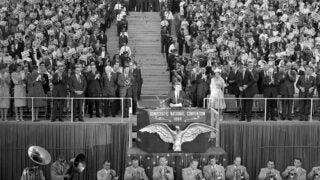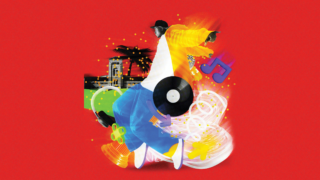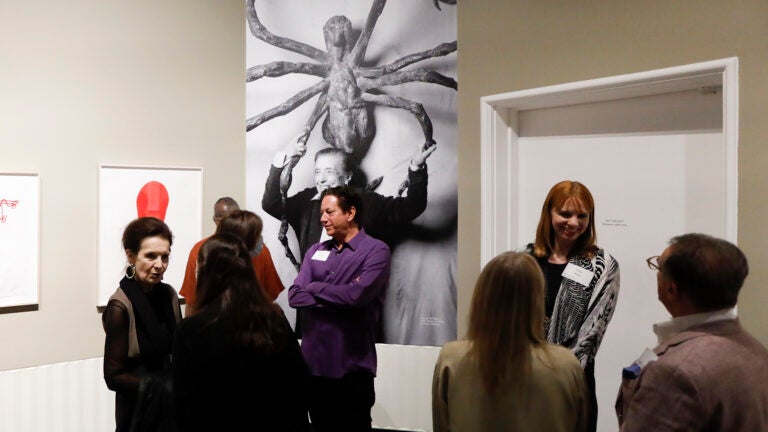
Guests explore the displays at the Louise Bourgeois: What is the Shape of This Problem? exhibition. (Photo/Reza Allah-Bakhshi, Capture Imaging)
Exhibition at USC examines timeless questions about well-being, family and sexuality
Louise Bourgeois: What is the Shape of This Problem? at the USC Fisher Museum of Art features works from the 1940s to the early 2000s, including some never-exhibited pieces by the legendary artist.
Dressed in her signature all black, Bethany Montagano added a pop of color to her outfit for the special occasion.
“Red — I’m wearing red heels,” said Montagano, USC Museums director. “It’s in honor of the artist.”
Montagano is referring to Louise Bourgeois, one of the most important artists of the 20th century. Works by the artist, known for her large-scale sculptures, installation art, paintings and prints, are on display at the USC Fisher Museum of Art through Dec. 3. The exhibition — Louise Bourgeois: What is the Shape of This Problem? — was celebrated at a recent reception at the museum.
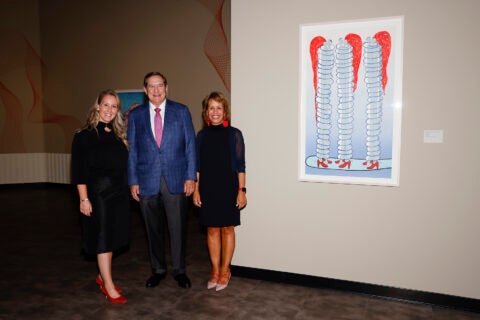
Bourgeois often added vibrant red to her artwork, as seen in her famous print “Couples.” In it, abstract figures represent complex relationships. Bourgeois had a lot of those, according to the show’s collector, Jordan Schnitzer.
“She, being gifted as an artist, was able to visually present the anguish and issues and challenges she faced as a woman, as a daughter, as a human being,” Schnitzer said. “This is a visual therapy, of seeing her work and knowing that she had difficulties with her family, the balance of sexuality and femininity, a woman’s place in the world. All the issues that are just as relevant today as they were when she did the work, that’s why this is such an important show.”
Also relevant: the artist’s open discussion of mental wellness as far back as the 1930s. “Art is a guarantee of sanity,” said Bourgeois, who created art from the time she was a child, but who produced much of her work in her 80s and 90s. She described the process of artmaking as necessary to sustaining her mental well-being.
“This show is particularly important coming out of COVID and particularly for our students here at USC,” said Kay Allen, associate director of the USC Fisher Museum of Art. “It gives us an opportunity to really discuss important issues that will help us in our everyday lives, and especially right now coming out of the pandemic and coming back into society.”
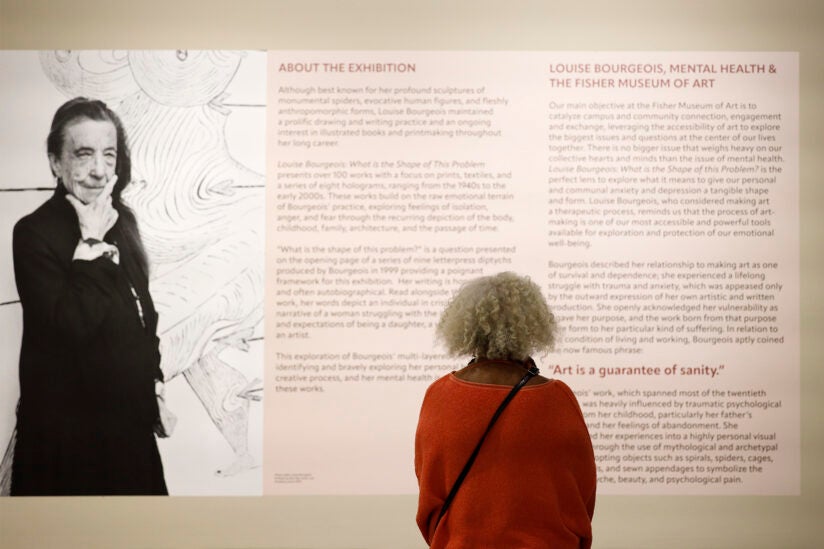
The exhibition presents 145 works with a focus on prints, textiles and a series of eight holograms, but Montagano says there is one piece that is not to be missed:
“‘Ode à l’Oubli (Ode to Forgetting)’ — a fabric book compiled from Bourgeois’ own garments. It is a deeply personal artifact and cathartic object of transformation that profoundly illustrates the powerful role art can play in helping us stitch across the ruptures of our past to safeguard our well-being in the present.”
This sentiment was echoed by USC President Carol L. Folt as she addressed nearly 300 art enthusiasts who attended the Louise Bourgeois art show opening last month.
“At USC, we are finding new ways — like this exhibition — to bring discussions of emotional well-being into the open,” Folt said. “We hope students and community members will respond in great numbers to the tours, workshop and discussions the Fisher Museum and campus partner organizations have planned around this exhibition.”
Huge student response to Louise Bourgeois exhibition
In fact, USC students have responded in huge numbers to the exhibition, with more than 50 scheduled student tours.
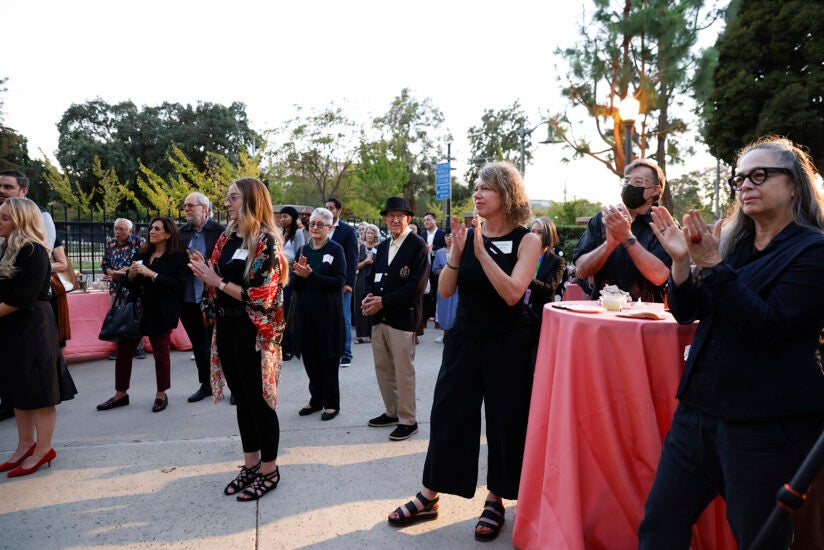
Schnitzer said he especially likes exhibiting at universities because they provide an opportunity to introduce students to the museum experience.
“If we can get them to come to the Fisher Museum and see it’s pretty neat to come in and see this exhibition, then maybe, just maybe, they’ll go off to their hometowns and go to museums in their communities and not think that building is for someone else,” he said.
USC Provost Charles Zukoski, who attended the opening of the exhibition, described the artwork as brilliant, startling and timely.
“Now is the time when we’re more sensitive to mental well-being, and we all need to figure out how to destress and that we can do that through art,” Zukoski said.
Louise Bourgeois exhibition puts focus on mental well-being
“Everyone is on edge. We see it in our students on campus, we see it in the faculty, and the question is: How do you get off edge, and how do you step back? Bourgeois did it through her art, and the fact that we’re exhibiting her work now, I’m hoping, will positively impact our community’s well-being.”
This exhibit gives the USC community a rare opportunity to witness never-exhibited work by the artist.
“This exhibition is so special because it presents an origin story,” Montagano said. “It shows the drawings leading up to where Louise Bourgeois’ monumental sculptures came from, which was a deeply personal place and from a purposeful space that she carved out in her art practice.”
The exhibition was made possible by the Collections of Jordan D. Schnitzer and his family foundation.
“Each of us comes preloaded with a million little mosaic parts of our life. That’s why when we see art, each of us can feel and express our own individual reactions to it,” Schnitzer said. “There are a lot of classes on this campus where 1 plus 1 must equal 2. But this is a sacred place where whatever anyone experiences, in seeing this artwork, is right for them.”

